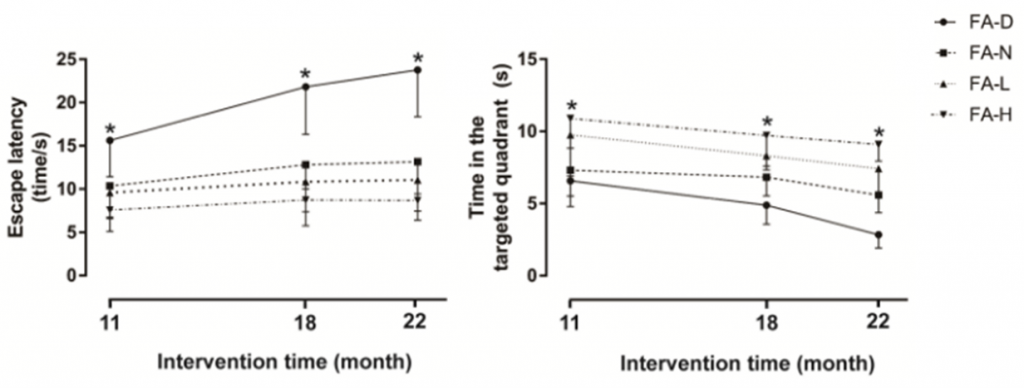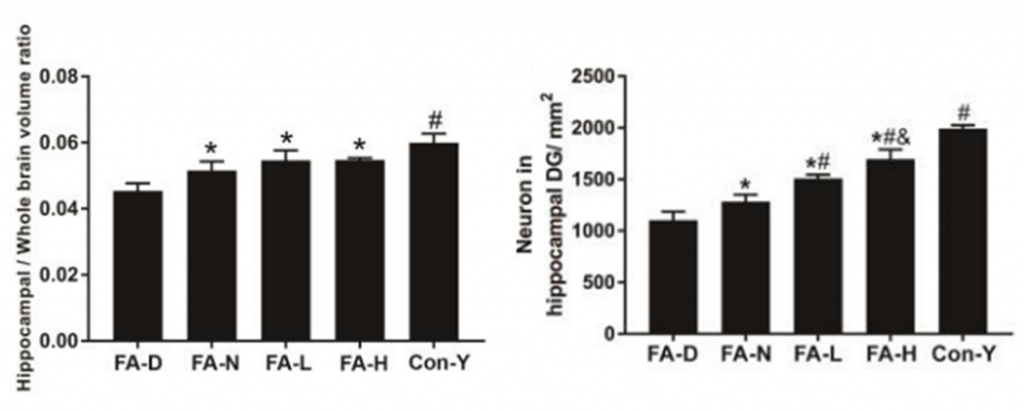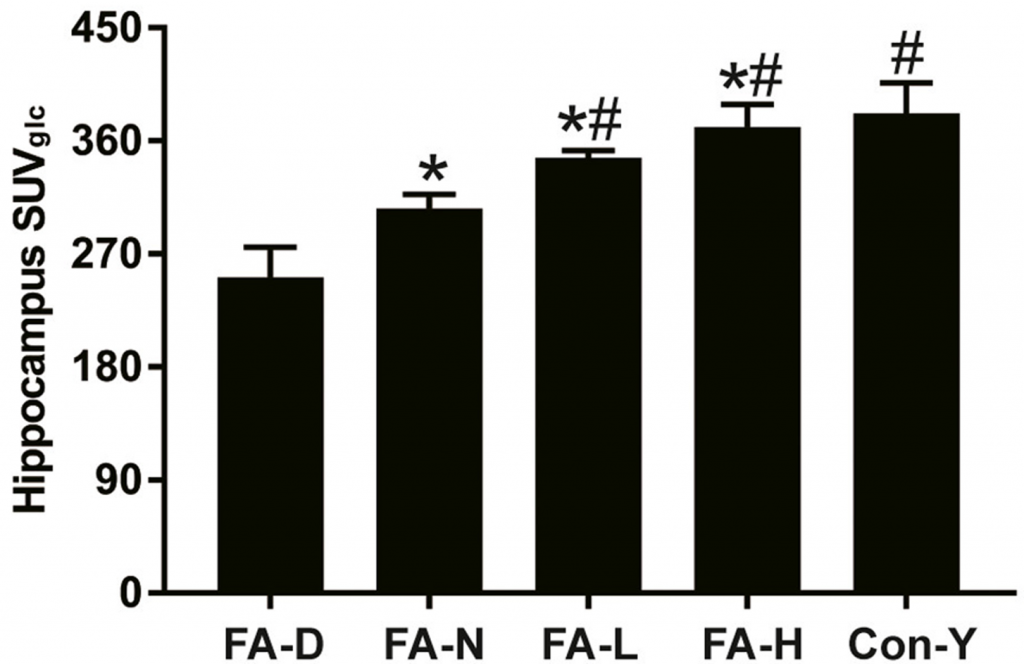Key Points:
- Long-term folic acid (FA), a.k.a. vitamin B9, supplementation preserves cognitive function in aged rats.
- Rats treated with FA exhibit reduced atrophy in the hippocampus – the brain region critical for learning and memory.
- FA helps brain cells intake glucose, the brain’s power supply.
Proper nourishment is critical to maintaining the aging brain’s resilience and vitality. Failure to do so makes this nimble organ increasingly vulnerable to damage, leading to cognitive dysfunction and memory decline. Of the many brain-boosting vitamins, minerals, and antioxidants, researchers have pinpointed folic acid (vitamin B9) as central to nervous system health and neuronal energy production, a crucial nutrient for reducing brain toxicity.
In a preprint article released in The Journal of Nutritional Biochemistry, researchers from Tianjin Medical University in China explored whether long-term dietary folic acid (FA) supplementation could preserve cognitive function in naturally aged rats. Zhou and colleagues confirmed that supplementing rats with FA enhances memory while protecting neurons in the hippocampus. What’s more, the findings showed that FA supplementation mitigated atrophy in the hippocampus and stimulated glucose uptake in the brain, a process that fuels cognitive functions.
FA Boosts Memory and Inhibits Hippocampus Deterioration
What makes FA supplementation paramount to retaining memory is its ability to quench oxidative stress, a hallmark of several neurodegenerative disorders. Upon FA deficiency, levels of the amino acid homocysteine increase, which triggers oxidative stress and cognitive decline. Although studies have demonstrated that low FA levels are associated with cognitive impairment, more research is needed to fully elucidate whether supplying adequate amounts of FA can thwart age-related cognitive decline.
With this in mind, Zhou and colleagues placed 3-month-old rats on a specific FA diet for 22 months. Rats were divided into four groups and placed on one of the following diets: FA-deficient diet (FA-D; 0.1 mg/kg), FA-normal diet (FA-N; 0.2 mg/kg), low FA diet (FA-L; 4 mg/kg), or high FA diet (FA-H; 8 mg/kg). Then, the investigators employed the Morris water maze test at 11, 18, and 22 months to assess spatial memory. This test monitored the rats’ ability to locate a hidden platform in a pool of water. Accordingly, more time spent in the quadrant containing the hidden platform indicated improved learning and memory.
Across all time points, the results showed that FA-deficient rats took significantly more time to locate the hidden platform than rats on a normal, low, or high FA diet. Additionally, FA-deficient rats spent the most time exploring areas outside the region of the hidden platform, another indicator of impaired memory. Normal, low, and high FA supplementation improved memory impairments, with high FA rats performing the best. However, the difference between rats on a low and high FA diet did not reach statistical significance, potentially indicating that FA’s beneficial effects are capped at a certain concentration.

FA Mitigates Hippocampus Atrophy
Our memory hub (hippocampus) naturally undergoes structural changes and gradually shrinks with age, which is tied to an increased risk of hampered cognition and decreased neuron survival. While certain activities like drinking and smoking can exacerbate brain deterioration, evidence suggests that physical exercise, adequate sleep, and diets high in antioxidant vitamins, unsaturated fatty acids, and plant-based polyphenols can counter brain atrophy. To monitor changes in hippocampus volumes and neuron survival, Zhou and colleagues analyzed the brains of FA-supplemented rats.
The investigators found that rats on a normal, low, and high FA diet exhibited larger hippocampus volumes and greater neuron survival than FA-deficient rats. Although there were no significant differences in hippocampus volumes between rats on a normal, low, or high FA diet, the trend showed that the high FA diet was most effective at increasing neuron survival. These findings demonstrate that long-term FA supplementation protects against brain atrophy, potentially contributing to FAs memory-boosting effects.

FA Stimulates Glucose Uptake
Among the many factors influencing brain function as we age, glucose uptake holds high authority. Glucose is the brain’s primary fuel, and its utilization slowly decreases with age. Without intaking glucose, brain cells become susceptible to damage, ultimately increasing the risk of neurodegenerative diseases like Alzheimer’s and Parkinson’s. Hence, researchers have honed in on interventions capable of stimulating glucose uptake in the brain.
Zhou and colleagues sought to determine if long-term FA supplementation could solve this brain metabolic energy (glucose) crisis. Following long-term FA supplementation, treated rats displayed significantly higher hippocampus glucose levels than FA-deficient mice, highlighting that FA successfully promoted glucose uptake in the brain upon aging. Notably, there were no significant differences in brain glucose levels between rats on a low and high FA diet, again suggesting that FA reaches maximum efficiency at 4 mg/kg in rats.

Supplementing FA for Healthy Aging
Collectively, the study’s findings show that long-term FA supplementation negates age-related memory impairment, likely through alleviating hippocampus deterioration and stimulating glucose uptake in the brain. Research surrounding FA supplementation continues to establish FA’s importance for healthy aging. In addition to playing a role in the production and protection of our genetic blueprints (DNA), FA has been shown to improve fetal development during pregnancy and assist in the prevention of anemia – a deadly disease stemming from the lack of healthy red blood cells. Ongoing research is evaluating FA’s effects in mitigating other harmful age-related disorders like heart disease and cancer, but results are still inconclusive. Thus, further research is needed to understand FA’s role in aging.